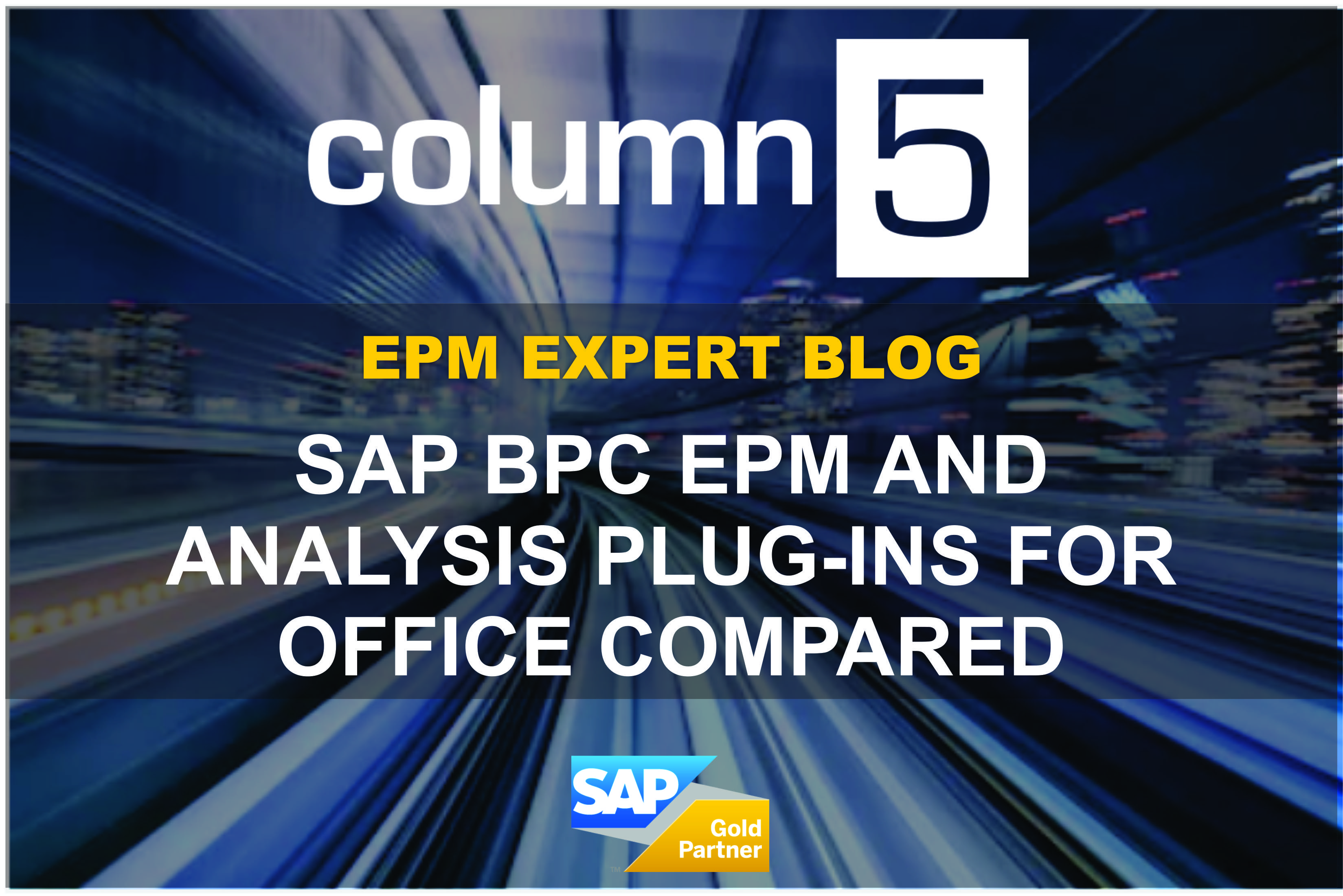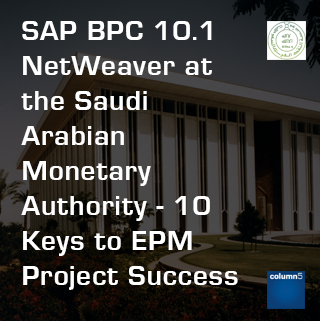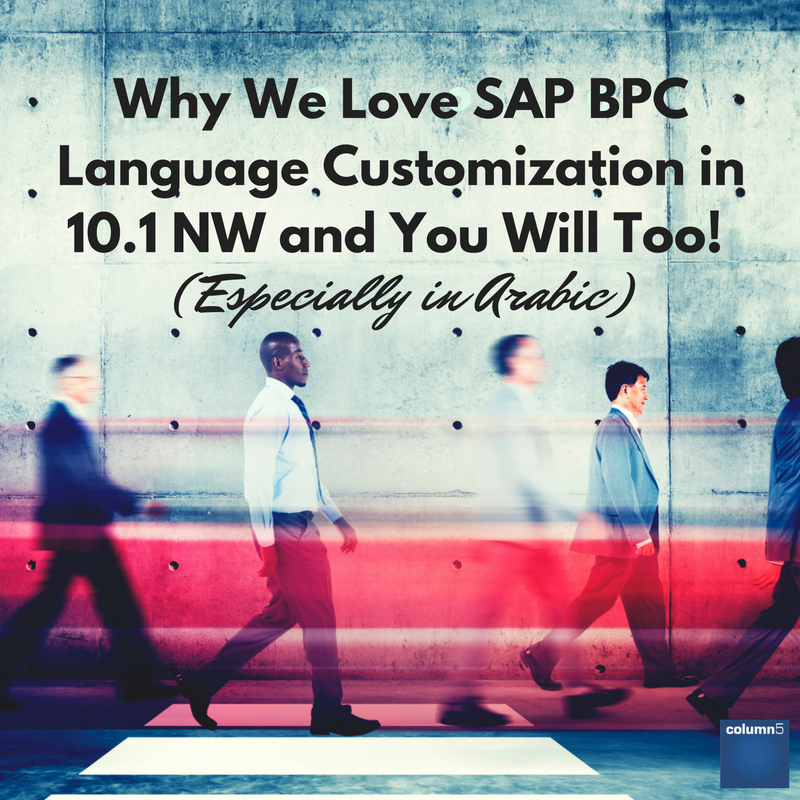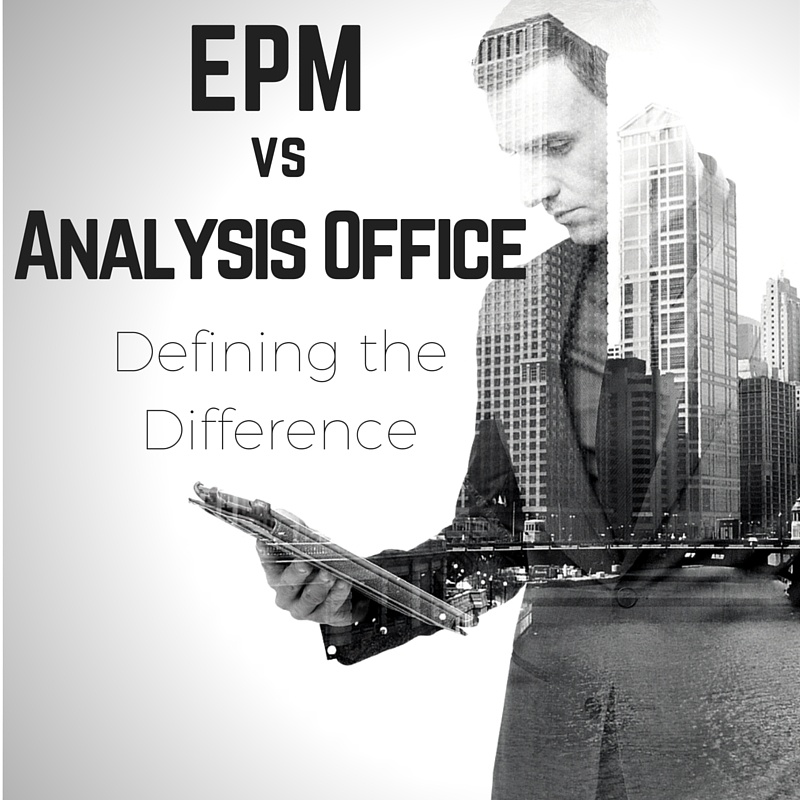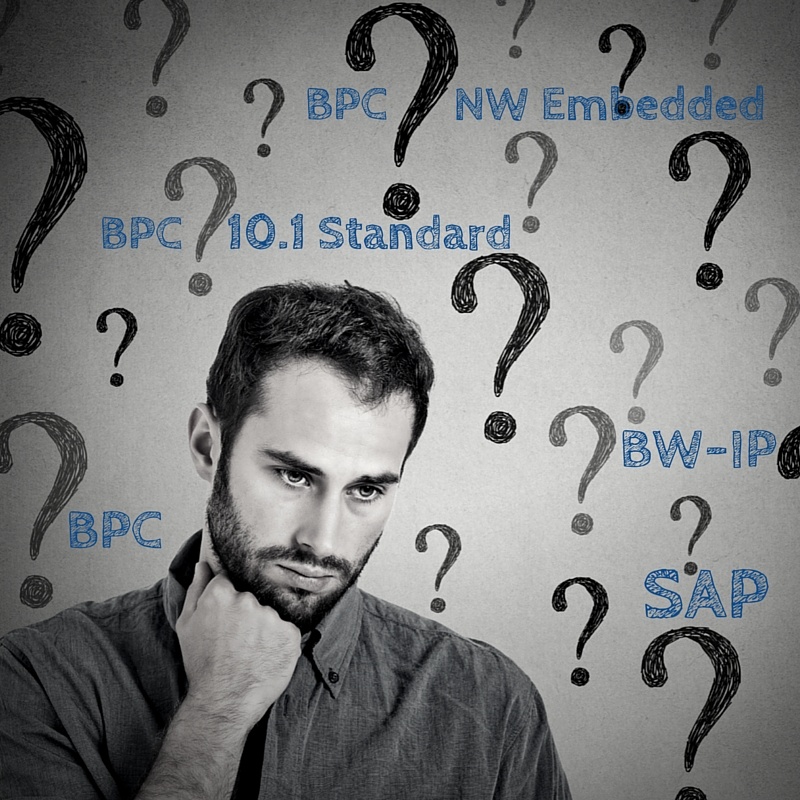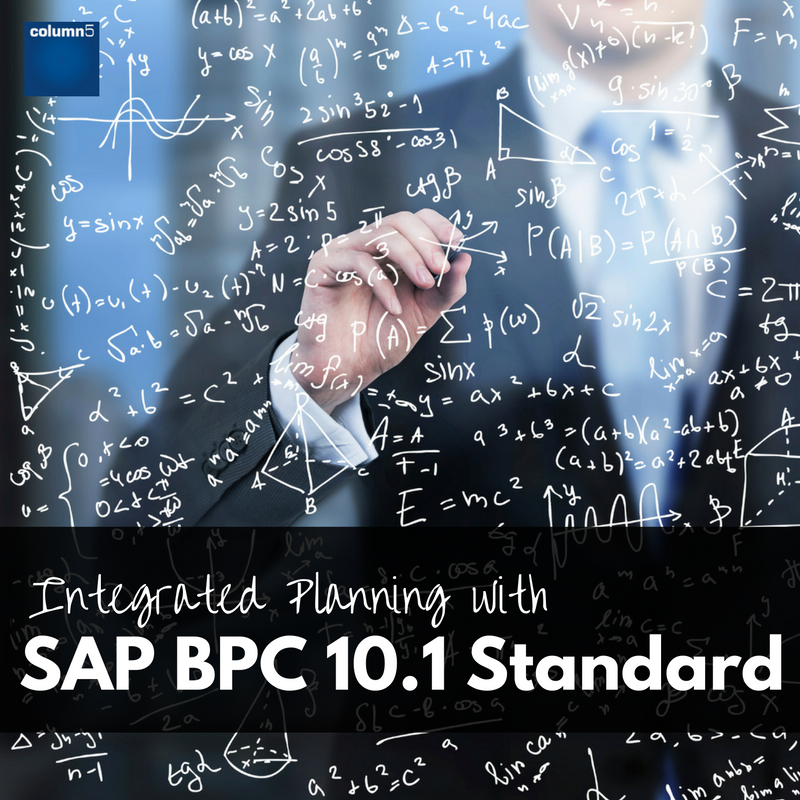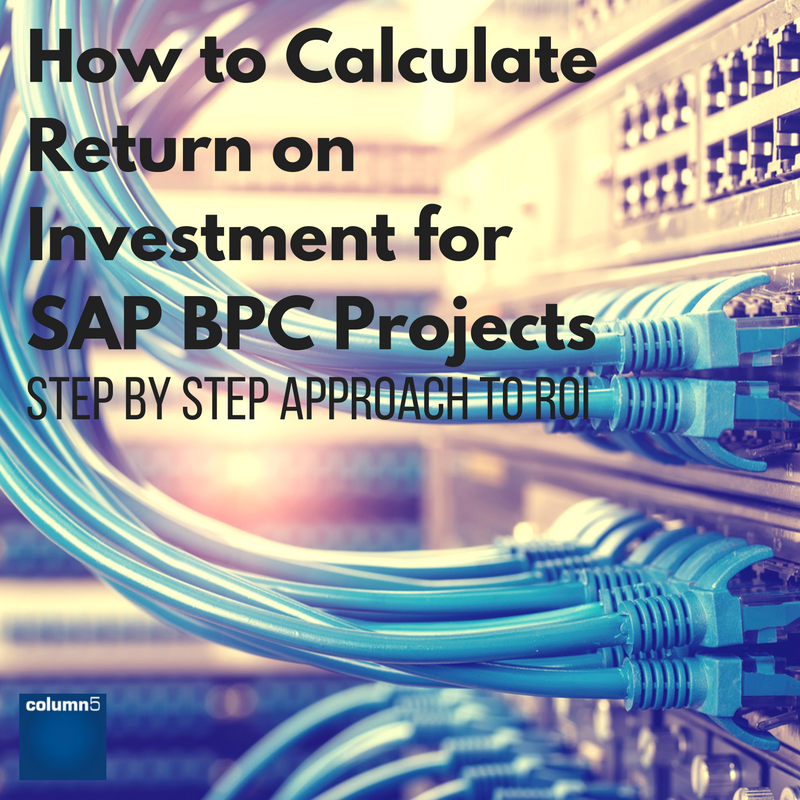This blog continues our series on how to find excellence in your BPC planning processes by looking at the area of Master Data and Data structure. This might seem like a dry subject, but getting it right is an essential part of an EPM system that delivers on your investment. Excellence in this area can make the difference.

SAP Analytics
Thought Leadership
Richard Hynes

Recent Posts
How to find excellence in your BPC planning Master Data and Data Structure
Topics: sap bpc, BPCv10 embedded, BPC11, BPC planning Master Data and Data Structure
SAP BPC EPM and Analysis plug-ins for Office Compared
EPM and Analysis plug-ins Compared – Critical information for the BPC v10.1 embedded, v10.1 and v11x user.
Topics: SO - BPC v10.x, SO - BPC v11.x, BPC 11, Version for BW/4HANA, FUTURE OF SAP BPC, EPM & Analysis plug-ins, BPCv10 embedded, BPC PLUG-INS, Analysis plug-in v2.7 for Office
How to integrate SAP ECC and external non-SAP data sources in BPC
How to integrate SAP ECC and external non-SAP data sources in BPC, How to integrate SAP and non-SAP data sources in BPC, Anatomy of an acquisition: Integrating data sources in BPC
Topics: SO - BPC v10.x, SO - BPC v11.x, tuneup, analytics tune up
Have you ever wondered if there’s a straightforward way to make your SAP BPC system perform better? The Darwin Calculation Engine (DarCE) might be just the trick you need!
Topics: Performance, Technical, Darwin EPM
SAP BPC 10.1 NetWeaver at the Saudi Arabian Monetary Authority - 10 Keys to EPM Project Success
From November 2015 to November 2016, with 9 months on site, Column5 worked at the Saudi Arabian Monetary Authority (SAMA), which acts as the central bank for the KSA, to implement a Budgeting, Planning and Forecasting system using SAP BPC 10.1 NW on BW 7.4. This is the story of that implementation and the key factors behind the success of the project.
Topics: Enterprise Performance Management (EPM), Training, Case Study, Executive, Upgrade
Why We Love SAP BPC Language Customisation in 10.1 NW and You Will Too! (Especially in Arabic)
Language customisation of SAP BPC for NetWeaver can be wrongly viewed as a challenge and an unnecessary effort. There are obvious advantages to presenting the software and the models in the user’s mother tongue. Although some customising needs to be done in the areas laid out below, the time spent is not excessive, and should be amply rewarded by improved accessibility for your international users.
Column5 is currently carrying out an implementation using SAP BPC 10.1 NW in Arabic for a major Middle Eastern bank. We believe this is the first full implementation in Arabic so we would like to share some of the insights regarding language localization.
Topics: EPM 10, NetWeaver, best practices for epm
Many of you will have heard that the EPM Add-In is being replaced with Analysis Office. This is not quite true: the EPM Add-In is being replaced by the EPM Plug-In which is a part of the new Analysis Office Add-In which also contains a Plug-In called Analysis. I hope that is clear.
If not, let me explain further.
Topics: Enterprise Performance Management (EPM), EPM 10, EPM Landscape, Analysis Office
SAP BW-IP, SAP BPC NW 10.1 Standard and SAP BPC NW 10.1 Embedded Compared
This blog will present a comparison of BW-IP, BPC NW 10.1 Standard and BPC NW 10.1 Embedded. Each of these products is currently offered by SAP as planning solutions, but each has characteristics and functionality which will influence the decision to use one rather than another. This article aims to clarify the differences between each of the products and aid in the decision as to which of them to implement. Each product will be better suited to a given company’s needs according to certain criteria, and this blog will set out to identify which product is best in each case.
Integrated Planning with SAP BPC 10.1 Standard
SAP BPC is a tool that can be customised to facilitate planning, budgeting and forecasting processes for different
functional areas such as Revenue, Human Capital Management, Operating Expenses, and Capital Expenditure. In this blog we will talk about how to integrate these functional areas into one unified BPC reporting model, for fully integrated planning.
The different functional areas require different data structures and consequently we will need to use a separate BPC model for each area. To give some common examples:
The Revenue model may, depending on the modelling requirements, need to have Product dimensionality in order to plan the sales volumes and calculate planned revenue according to the price by product, and a Customer dimension to plan sales and analyse the outstanding payments by customer or channel.
The Labour planning, or HCM model may need to include a role dimension, in order to plan the salary by role or grade, or an Employee dimension to enable planning by employee or job grade.
The Operating Expenses or OPEX model should enable the user to plan the expense related General Ledger accounts at the required level of detail, for example, by collecting the number of flights and hotel nights and using forecast unit costs to calculate travel expenses.
The Capital Expenditure or CAPEX model should include an asset dimension which will include the company’s asset list and allow the user to plan new asset purchases and the corresponding depreciation for the planning period.
Topics: Thought Leadership, Financial Information Management, BPC (Business Planning & Consolidation), Forecasting, sap
How to Calculate Return on Investment for SAP BPC Projects
We know that EPM (and specifically SAP BPC) implementations have the potential to be very profitable, more so than other IT projects like ERP implementations. But how do you prove that?
This blog takes a step by step approach to building a solid business case for a SAP BPC implementation. There are many intangible benefits to an EPM project which are difficult to put a value to, but we can set out all the costs and calculate a large part of the benefits. Even without adding in the intangible benefits, such as improved data quality, higher management efficiency and faster decision making, BPC projects can still be very profitable projects, so let’s go through the business case elements step by step.
Topics: Best Practices, Thought Leadership, Enterprise Performance Management (EPM), EPM ROI, BPC (Business Planning & Consolidation)
Subscribe
Recent Posts
Posts by Topic
- Enterprise Performance Management (EPM) (93)
- BPC (Business Planning & Consolidation) (75)
- Best Practices (51)
- Performance (49)
- Thought Leadership (47)
- Implementation (35)
- Process Improvement (27)
- Training (25)
- Value (25)
- EPM (19)
- Project Management (19)
- Data (16)
- Excel (16)
- BPC (15)
- Roadmap (14)
- sap bpc (14)
- User Experience (12)
- Analytics (11)
- EPM ROI (11)
- Center of Excellence (10)
- Financial Information Management (10)
- Microsoft (10)
- Business Intelligence (BI) (8)
- Cloud (8)
- EPM 10 (8)
- Forecasting (8)
- HANA (8)
- best practices for epm (8)
- Darwin EPM (6)
- Innovation (6)
- NetWeaver (6)
- Technical (6)
- best (6)
- EPM Maturity (5)
- Financial Close (5)
- sap (5)
- BPC11 (4)
- Consolidation (4)
- EPM Add-in (4)
- Executive (4)
- Product Focused (4)
- SO - BPC v10.x (4)
- SO - BPC v11.x (4)
- epm summit (4)
- technology (4)
- xp&a (4)
- Analysis Office (3)
- BPC NW – Embedded (3)
- BPC logic (3)
- BPC planning Master Data and Data Structure (3)
- BPCv10 embedded (3)
- Case Study (3)
- EPM Roadmap (3)
- Extended Planning & Analysis (xP&A) (3)
- OutlookSoft (3)
- SAC (3)
- group reporting (3)
- reporting (3)
- #EPMInnovation (2)
- AISuccess (2)
- API (2)
- Analytics Cloud (2)
- BPC 11, Version for BW/4HANA (2)
- DarCE (2)
- EPM Landscape (2)
- Epm Academy (2)
- FUTURE OF SAP BPC (2)
- Functional (2)
- Performance Tuning (2)
- SAP Analytics Cloud (2)
- SAP HANA (2)
- SO - BPC v7.x (2)
- SO - Functional Track (2)
- SaaS (2)
- Services Focused (2)
- Upgrade (2)
- analytics tune up (2)
- tuneup (2)
- Analysis plug-in v2.7 for Office (1)
- BFC (1)
- BPC Alternatives (1)
- BPC Lifeline (1)
- BPC PLUG-INS (1)
- BPC v10 upgrade (1)
- BW (1)
- CPM (1)
- Capital planning (1)
- EPM & Analysis plug-ins (1)
- EPM Investment (1)
- EPM events (1)
- Embedded (1)
- Extended Support for SAP BPC (1)
- Investment Comparisons (1)
- Rapid Deployment Systems (1)
- SAP BFC Migration (1)
- SAP BPC Technical Issues (1)
- SAP EPM Add-in Crashing (1)
- SAP EPM Add-in Performance (1)
- SO - Executive Track (1)
- SO - Platform - Microsoft (1)
- SO - Technical Track (1)
- VB (1)
- webcast (1)
3 S T E P S
To Enhance Your EPM Performance:
1.Get Your Ultimate Guide to Improving SAP EPM Performance
Learn what could be contributing to your poor performance and how to diagnose common problems. Get tips that will empower you and your team to improve the performance of your system in order to get the most out of your SAP EPM Investment.
2. Test Your BPC Performance
Get a BPC performance report card and custom report to identify performance issues you may not even know you have.
3. Get Your EPM Assessment
Our assessment delivers a complete, best practice roadmap for you to follow. We’ll work together to assess what you need to pivot your financial forecasting, planning, reporting and analysis to handle the compressed requirements from the volatile COVID-19 environment.




